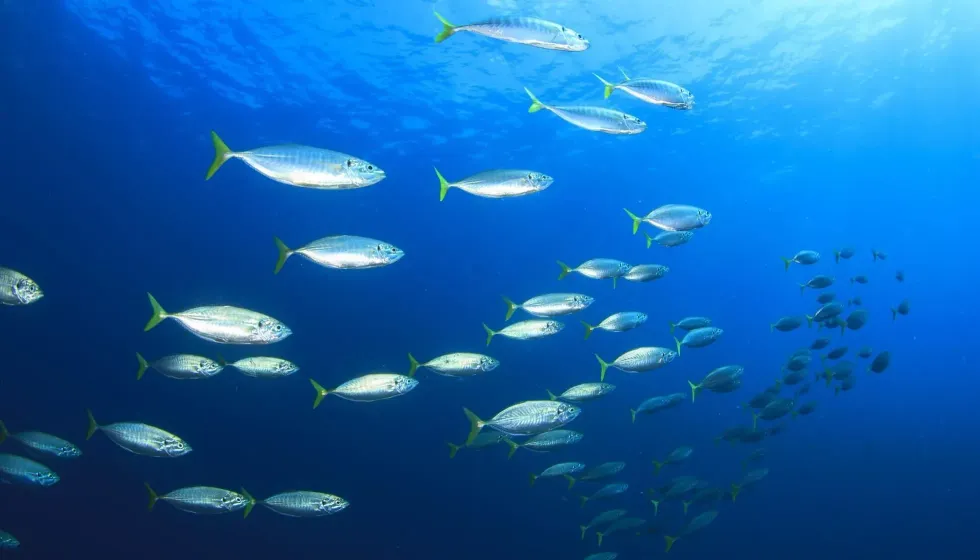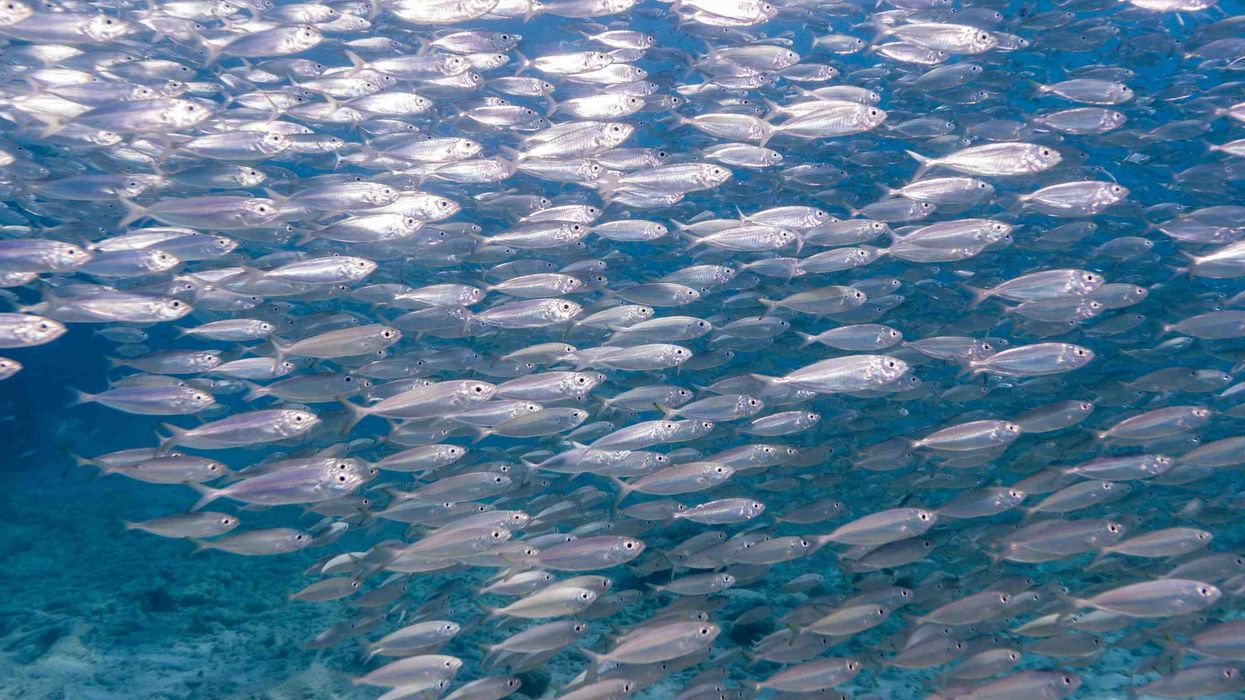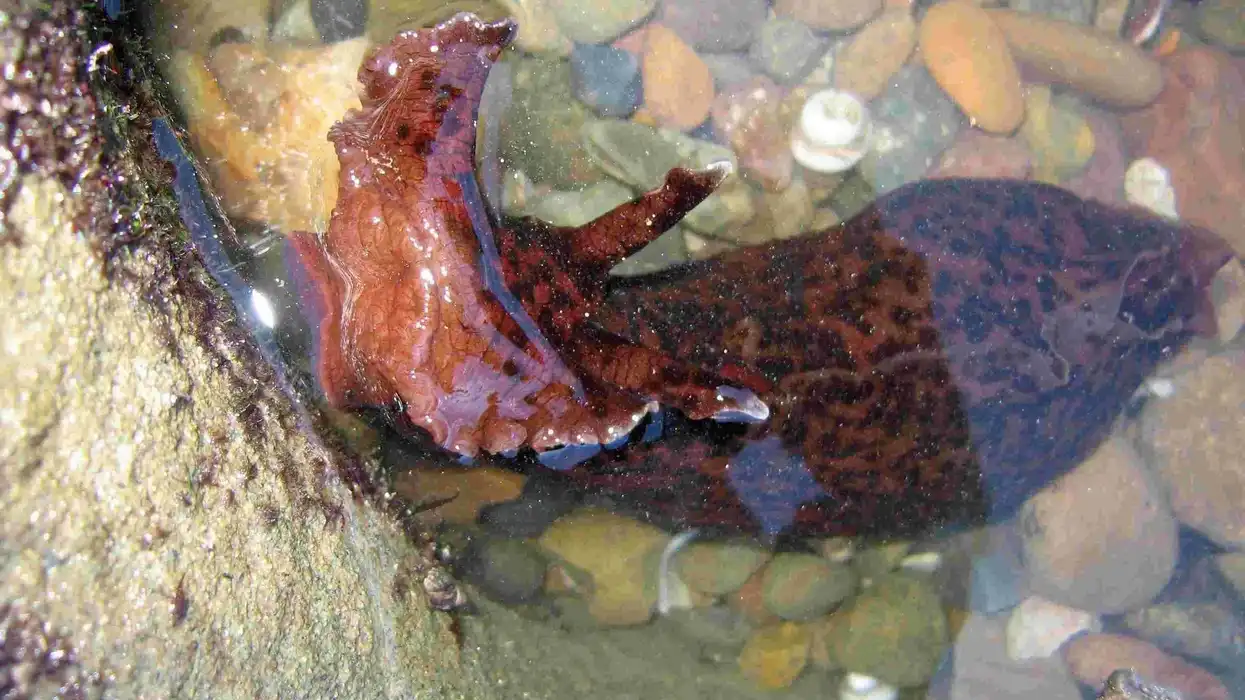Pacific saury (Cololabis saira) is a small pelagic fish species of the family Scomberesocidae. This family name is a derivative of Scomber, which is, in turn, a derivation of the Greek word 'skombros,' meaning 'mackerel,' 'pike' in Latin (Esox).
The color of Pacific saury is dark green to blue. These species also turn yellow, and the reason has not yet been determined. The genus Cololabis is a derivation of Greek kolos means 'short,' and Latin 'labis' means 'forceps.'
There are six families in this order Beloniformes. Within the family, there are two recognized genera, Cololabis and Scomberesox.
The specific name Saira is the local name used for this fish in the Kii Peninsula area of Japan. The Pacific saury fishes are famous seasonal foods in the autumn of Japanese.
It is well-known as grilled Pacific saury. The Pacific saury is also a food fish in Korea, China, Russia, and the United Kingdom. These fish species are highly migratory.
Some natural predators of these fishes are tuna, squid, and marine mammals. The other genus Scomberesox contains three saury species – Atlantic saury, dwarf saury, and king gar.
If you liked these facts about Pacific saury, then do read some dwarf mongoose facts and rainbow trout facts.
Pacific Saury Interesting Facts
What type of animal is a Pacific saury?
Pacific saury (Cololabis saira) is a pelagic fish of the phylum Chordata and order Beloniformes. They are also called mackerel pike. Sanma is their Japanese name and kkongchi in Korea.
The mackerel pike is seafood in many East Asian cuisine. Another species of the genus Cololabis is the saury (Cololabis adocetus). These fish species occur near the surface around 0-755 ft (0-230 m).
What class of animal does a Pacific saury belong to?
The Pacific saury (Cololabis saira) or sanma belongs to the class Actinopteriigy.
How many Pacific sauries are there in the world?
The Pacific saury (Cololabis saira) or sanma population is not known.
Where does a Pacific saury live?
The Pacific saury (Cololabis saira) or sanma is found in the North Pacific ocean extending from Japan and Korea eastwards to the Gulf of Alaska. They are also found southward to subtropical Mexico – 137°E to 108°W and 67°N to 18°N.
What is a Pacific saury's habitat?
The Pacific saury (Cololabis saira) or sanma are epipelagic and are surface dwellers. These migratory species are also found offshore. The juveniles occur around drifting seaweed.
They prefer a sea temperature of about 59-64 °F (15-18 °C). During spring/summer, the baby Pacific saury migrates northward, whereas in autumn/winter they move southward. They utilize the area near and around the transitional zone for food.
Who do Pacific sauries live with?
The adult Pacific saury (Cololabis saira) or sanma species can be found in schools near the surface.
How long does a Pacific saury live?
The Pacific saury (Cololabis saira) lifespan is around 4 to 6 years.
How do they reproduce?
The spawning season is winter as per the observation that the spawning activity was high during winter. These fish species migrate for spawning to the western North Pacific ocean. The actual spawning duration is not known.
During the single spawning season, they lay eggs multiple times. The individual fish lays up to 18,000-47,000 eggs per spawning season. The mackerel pike (Pacific saury) eggs attach by a filament to any floating kelp.
These eggs are transported by the ocean currents. However, the larvae in the eastern area are considered to hatch without drifting to any other place due to weak currents.
It takes the eggs around two weeks to hatch. The juveniles get together in schools once they are about 1.9 in (50 mm) in size and start moving northward. The average life span of this fish species is up to 2 years.
What is their conservation status?
The conservation status of mackerel pike (Pacific saury) is Not Listed. This fish is caught for the food industry.
Pacific Saury Fun Facts
What do Pacific sauries look like?
The Pacific saury fish body shape resembles a knife and is called autumn knife fish. They have a small mouth, small forked tail, long body, and series of small finlets located between the anal and dorsal fins.
The dorsal color surface is between dark green and blue with silver underbellies. They have small blue blotches on their sides. The occurrence of Pacific saury yellowtail and mouth is possible but is rarely caught.
How cute are they?
The Pacific saury fish are slimy and long. So, they are not considered cute.
How do they communicate?
These fish species found near the surface communicate like any other fish species.
How big is a Pacific saury?
The length of the Pacific saury is 12.5 in (320 mm). They can grow up to 15.7 in (40 cm). The Atlantic saury can grow up to 20 in (50 cm) in length.
How fast can a Pacific saury swim?
The swimming velocity of the Pacific saury is 64 in/s (163 cm/s).
How much does a Pacific saury weigh?
The average weight of the Pacific saury is 0.44 lb (200 g).
What are the male and female names of the species?
There is no specific name given to female and male Pacific saury.
What would you call a baby Pacific saury?
There is no specific name given to a baby Pacific saury.
What do they eat?
The Pacific saury does not have a stomach and has short and straight intestines. So, the Pacific saury feeds on zooplankton like krills, amphipods, copepods, larvae, and eggs of common fish species like anchovies. The feeding decreases in the fall, and during the breeding season in winter feeding activity increases.
Are they dangerous?
No, the Pacific saury is not dangerous.
Would they make a good pet?
These fish species are used as fish meal and pet food and are famous for the grilled Pacific saury dish. The availability of Pacific saury sashimi for sale is increasing but not very common.
Did you know...
The Pacific saury parasite includes Rhadinrhynchus selkirki. These are harmless.
Other Pacific saury names are Blueys, Orphie, and Kkongchi gui (salt-grilled saury).
As per the north Atlantic fisheries, these saury fish species are caught between June and December.
These fish species are more often cooked with the skin.
The grilled Pacific saury whole garnished with daikon oroshi (grated daikon) with rice and miso soup is most commonly served Japanese food. Other ingredients like sudachi, lime, soy sauce, and other citrus juices are added to better the flavor.
In Japanese culture, sanma slowly cooking over the coals is considered a symbol of autumn. The charcoals add one more layer of flavour to the meat.
Again, the grilled Pacific saury (with salt), kabosu sprinkles, and a bit of juice like lime, soy sauce, ponzu, yuzu are added to bring out its flavour and are served with reddish. The autumn Pacific saury cartoccio is an anime fish.
Another variety dish of these fish species is Pacific saury nigiri sushi.
The fresh Pacific saury whole can be used for canned kabayaki or pan-fried.
In Japanese and Chinese, the saury is written as 'autumn knife fish.'
The Pacific saury fishing activities in Japan was the lowest in 2019 since the year 1950, and it continues to deteriorate.
The saury fish species, Atlantic saury (Scomberesox saurus), is a native fish of the northern Atlantic ocean.
The saury fish species, king gar (Scomberesox scomboides), was first described by Sir John Richardson, arctic explorer, naturalist, and Scottish naval surgeon as Sairis scomboides. He gave Dusky Bay, New Zealand as the type locality.
The fishes of this family are quite like the flying fish, as they stay near-surface and jump while swimming.
How did the Pacific saury get its name?
The Pacific saury is found in the northern Pacific Ocean. The name saury is a derivation of the Latin word saur (us) meaning elongated marine fishes.
The specific name Saira is the local name used for this fish in the Kii Peninsula area of Japan. The genus Cololabis is a derivation of Greek kolos means 'short,' and Latin labis means 'forceps.'
Are Pacific sauries endangered?
The conservation status of Pacific saury has not yet been evaluated. They bring huge profits to fisheries and the food industry. Also, the Pacific saury price keeps increasing with demand. Predators of these species include tuna, squid, and marine mammals like manatees, seals, sea-lions, and sea otters.
Here at Kidadl, we have carefully created lots of interesting family-friendly animal facts for everyone to discover! Learn more about some other fish including chum salmon or arctic char.
You can even occupy yourself at home by drawing one on our pacific saury coloring pages.










